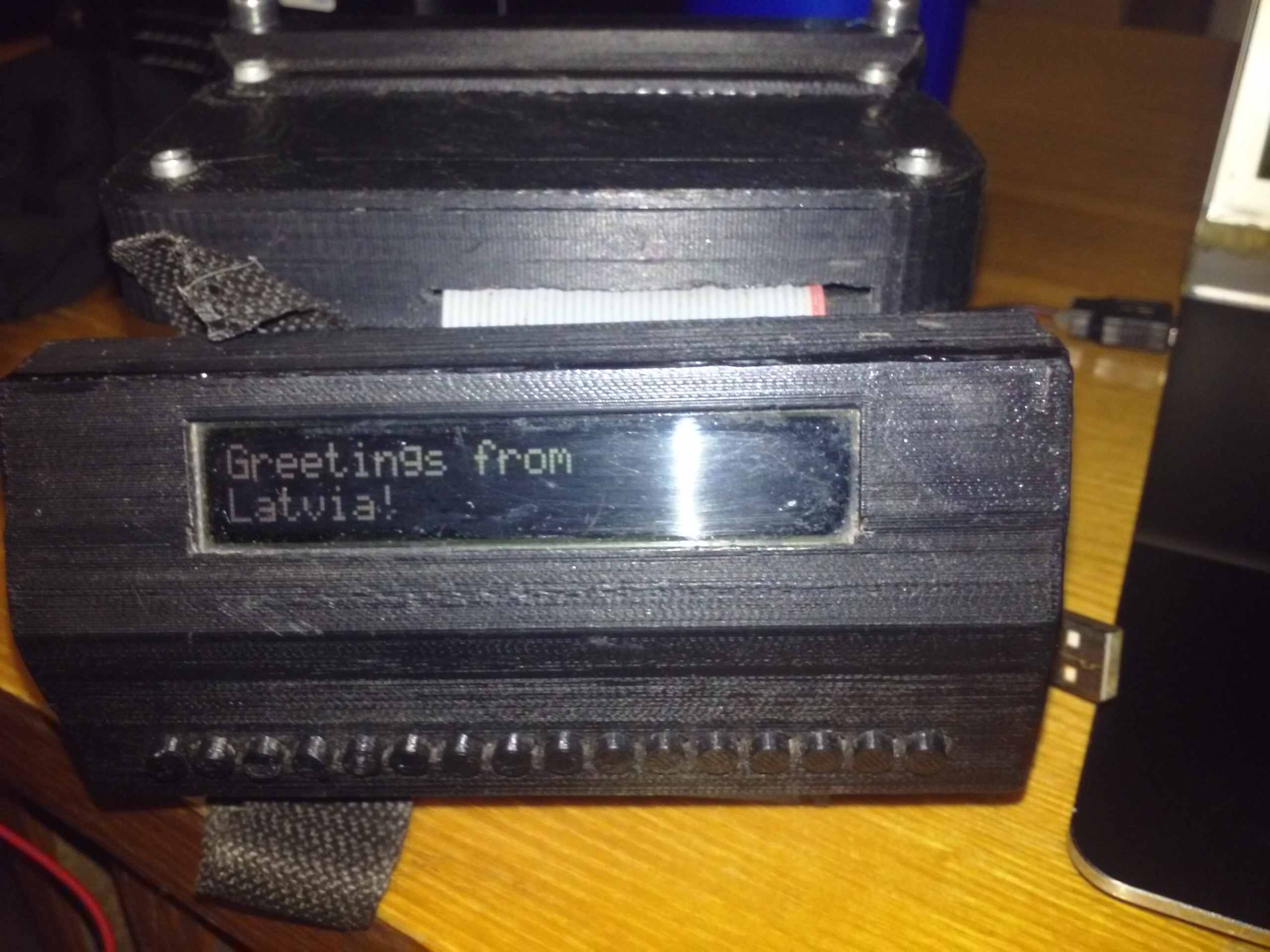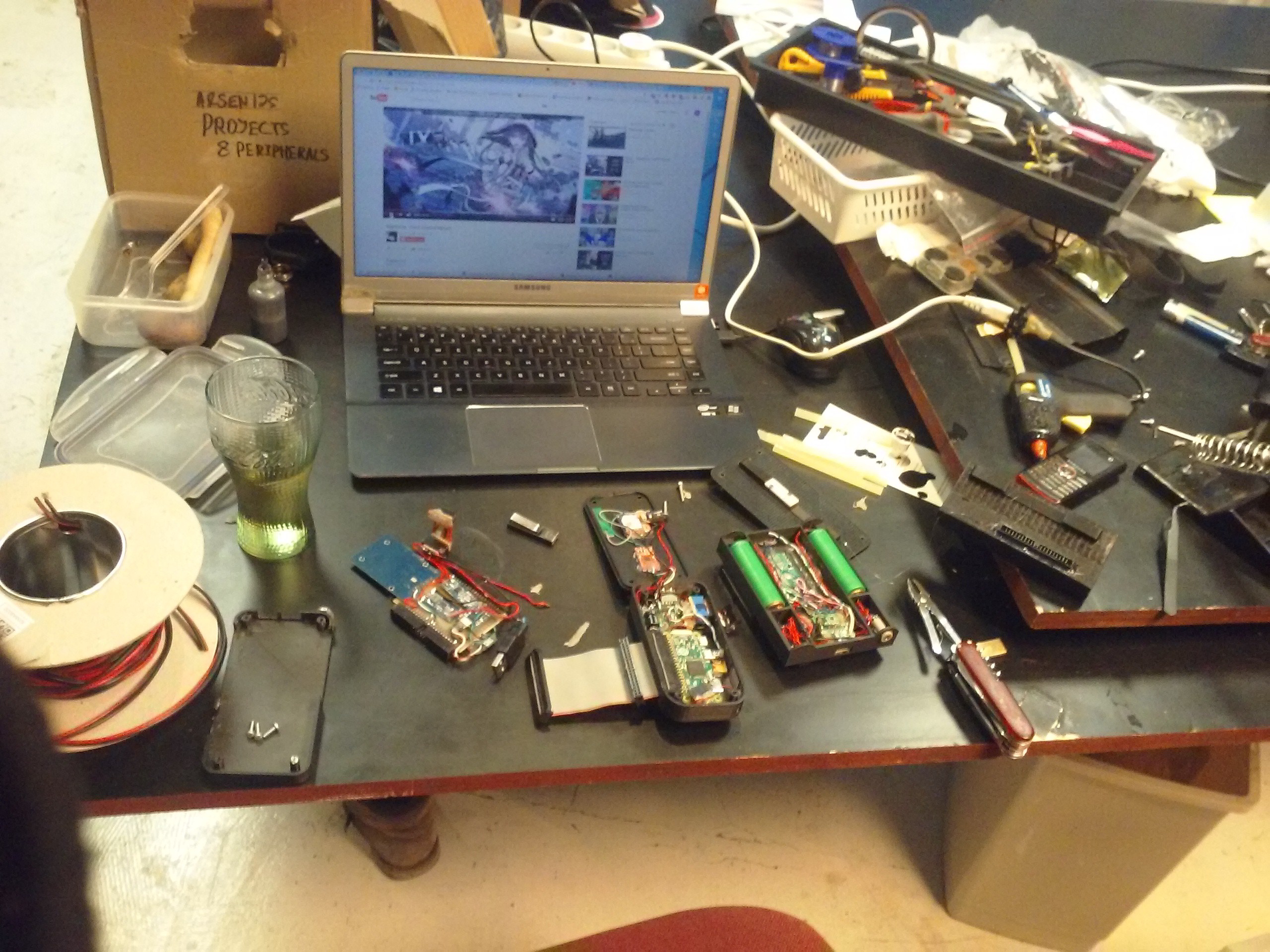The hardware works for some time. I can get 4 hours of battery life so far, which is nice, and extending it is the direction I'll be moving towards now.
 Issues and/or solutions so far:
Issues and/or solutions so far:
- One USB hub heats up (and therefore wastes power), the other one doesn't. Solution I'll soon use: disassemble them both, study the schematics and undertand what makes it so. Also, overrride the built-in voltage regulators which are linear and therefore suck, especially given that I have 3.3V on board.
- I changed Pi Zero power source from 5V to Li-ion battery power. Looking at the schematics, it should be able to handle that. I just only did it today and didn't get it fully discharged yet, we'll see how it goes.
- Battery life halved. Solution - find the place where one of the battery wires broke, fix it.
- Rain- and snow-proofing the display module. Solution - glue the display lid to the display case with ABS glue. Pros: it's glued shut. Cons: it's glued shut. Buttons break away from time to time, falling out of the display, and now I can't fix it - will try a hack involving tweezers and glue soon. Also, I still need to rainproof the display cutout - even had a temporary display failure once (some lasercut thin transparent acrylic will do, as soon as I get to it)
- Buttons break. I should probably change the tab connecting them, or ask somebody to print them with flexible material.
- The USB charging plug's cable is prone to breaking due to its bend angle right to the socket. Solution: making thicker wires (which I failed the last time I fixed it). In the future, a redesign of the whole module is due.
- IDC-10 failed again. Solution - inserting actual wires in the sockets instead of a ribbon cable. Those wires can carry more current and should also be more resistant to bends.
- IDC-10 sockets would get all bent up during soldering due to overheating. Solution - take a small piece of protoboard, insert the connector in it, solder them together and solder the wires to it. Works very well now, and I did the same with 2x5 female headers I use for comm-to-power power cable as IDC replacement.
- I added battery level monitoring - through the GSM modem which you can get battery level from by using an AT command. Right now I took the modem out since it's temporarily unused and I needed it for another project, but the pyLCI app is here.
- The comm-to-cpu module adapters kept breaking. Solution: an unibody adapter. Even more ugly, even more of a hack.
- Replacing batteries on the go is a pain. A redesign is due.
Pomodoro timer app! It interacts with the Pomodoro daemon I wrote, it uses annoying sound notifications and pyLCI as control interface
I really really need some better power monitoring for this thing. I have tweaked the power consumption and such, but right now I can't really say if that changes anything. Also, there should definitely be power switchover circuits for when the device's charging, and individual cell monitoring, and individual cell switchover, and easier cell hotplug...
However, I'm currently using it to make a project that'll help me to make money to make a living. Once I'll have some rest from it, I could finally redesign it.

This thing is a very good development station. It's Linux-based, has pyLCI which I put in most of my projects, is battery-powered and thus easy to move around, brings my music with me anywhere and generally is a fun thing to show people. It just needs to be better-looking - that means being more sleek, more unibody and less blocky. I can do that eventually =)
 Arya
Arya
Discussions
Become a Hackaday.io Member
Create an account to leave a comment. Already have an account? Log In.